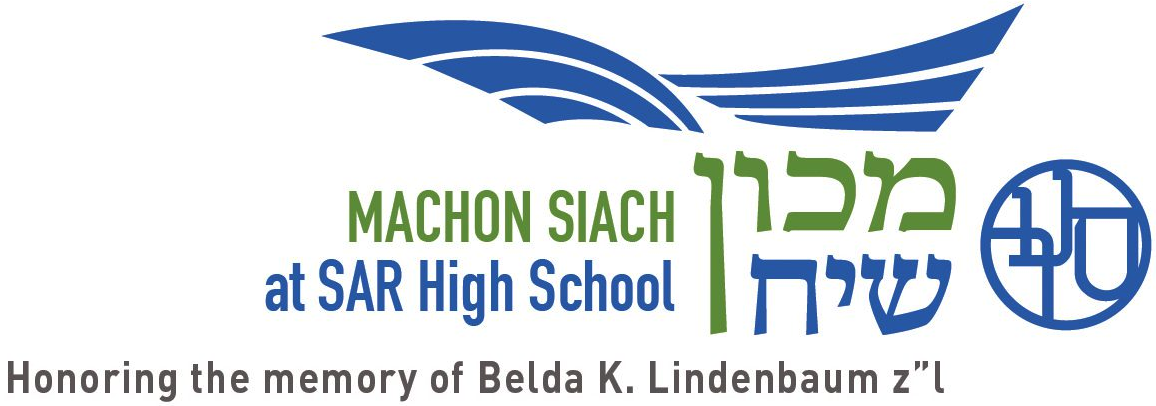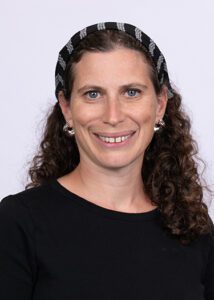
Teaching Breishit: Mirror and Lens
At kiddush early this September, an old friend kindly asked how the school year has been going. Sighing deeply and smiling widely, I said: ‘It is going great! But, you know, it’s like starting a corporation anew each year!’ Startled by my response, she asked: ‘but aren’t you teaching the same classes as last year? How could it feel so new?’ From her perspective, the central challenge in teaching is mastery of content. And it certainly takes time to build mastery in content. But the longer I am in this business, the more it seems to me that content mastery – defined narrowly– plays a much smaller role than I would have imagined in my graduate school days.
In September, as I enter each new classroom of students, I am greeted by a dazzling array of personalities, learning styles, individual needs, and personal stories awaiting discovery. My summer planning quickly comes into sharp relief when I encounter the actual students in front of me. What are they looking for? What do they already know? What questions do they have? What circumstances or challenges are they combatting? What aspirations might they have? Even in a small class of twelve students, there will be twelve distinct sets of answers to these questions. Of course, none of this is readily apparent on day one; I learn it gradually over the course of the year.
Yet even once I adapt to meet the different needs of my students, there are still more variables to address. For example, I have taught Breishit at SAR High School to seniors for more than a decade. In all that time, the biblical verses have remained sturdy and steady, but the backdrop to our learning continues to shift. It can be hard to detect changes in attitude, concerns, assumptions – what is going on in our students’ collective mind – when we are in the routine of school life. But teaching Breishit affords me a sharp lens to notice the shifting, pressing student questions and concerns. Every few years, Breishit “lands” differently, and I subtly adapt my focus to allow Breishit to speak to them and challenge them. Breishit is surely not the only such example in Torah or General Studies where students’ mindset or cultural landscape impacts our pedagogy. But there is something about Breishit’s familiarity to students and its stories’ fundamental issues that makes it more responsive to these contextual concerns.
Here is a snapshot of a few salient shifts I’ve noticed over the years.
In my early days at SAR, students were intrigued by the conflicts they detected between science and Breishit and were troubled by significant details in Breishit that violated historical truths they had studied. I would devote a full week to exploring a variety of approaches to these important questions. Sometimes, students would stay after class to discuss articles they had read or to tell me about programs they had watched. As a class, we could not move on from Breishit chapter 1 until they felt we had sufficiently addressed these historical and scientific challenges. Students also probed me to find out how I dealt with these questions in my own life. The issues were central to their learning.
In more recent years, I have largely skipped these lessons. I don’t believe in addressing questions that students do not raise, and my students of late have not been troubled by these areas of potential conflict. To be honest, I am not quite sure why this issue has been so radically removed from their purview. It could be because they are exposed to these kinds of questions earlier in their high school careers. It could also be that students are far more comfortable adopting nonliteral lenses to study Tanakh.
In the year leading up to President Trump’s election and in the year following, Breishit surprised me with its uncanny relevance to the tensions of the moment. My class was split politically, and we waded very carefully into discussions of human power, agency and responsibility. Even Rav Soloveitchik’s The Lonely Man of Faith, which we read each year in 12th grade, seemed to reflect the clashing aspirations of our political parties. It was a challenge, but I worked hard to create a space where every student could express their views without judgment.
Since that challenging year, political concerns rarely surface. But other hot button issues have emerged. Students who lose sleep over environmental anxiety find much to analyze in the early chapters of Breishit. Indeed, our responsibility for the land is a dominant theme throughout Breishit. For years, my students had glossed over the centrality of the land and the implicit threat we pose to it, since humanity is commanded to “conquer it” and to “dominate the other species”. These days, with climate change and human response in the daily news, none of my students can ignore the layered, complex environmental messaging in Breishit. They seek solutions to problems they feel tasked to solve, and they look to the Torah for guidance.
In recent years, gender has also been a dominant issue rising to the surface of our learning. Before they try to square the two different accounts of creation – and negotiate the very different stories of how man and woman relate to one another – students bring with them a mix of strong views, curiosity and confusion. My job is to supply them with the tools to engage intelligently in a discussion of perceived gender roles. I expose them to a range of traditional and contemporary interpretations; we are vigilant to watch for additions to or deviations from the pesukim; we pay close attention to ambiguities in the text, explore options for analysis and gather data to support a variety of possible conclusions. If the students recognize that Breishit cannot be easily reconciled with any single position, I count it as a success.
Even more recently, gender roles are steadily being obscured by students’ questions about sexuality and gender identity. They don’t expect the Torah to conform to contemporary categories, nor should they, but they can’t shed their conceptions when they learn Torah. We linger over chapter 1’s description of the first human – male and female at once, both in the image of God – and wonder about the midrashic suggestion that the first human was a two-faced, back-to-back creature. We delve into discussions about partnership and companionship, about the emotional need to connect, to see the other, and to be seen. I try to make space in our discussions for a range of student experiences, while teaching the pesukim authentically.
Every day, my students show up to class as themselves – their full selves. My job is to listen to them, to see them and to hear them as they encounter the Torah. I hold tight to the teaching of Ben Bag Bag:
Turn it over, and [again] turn it over, for all is therein. And look into it; And become gray and old therein; And do not move away from it, for you have no better portion than it.



